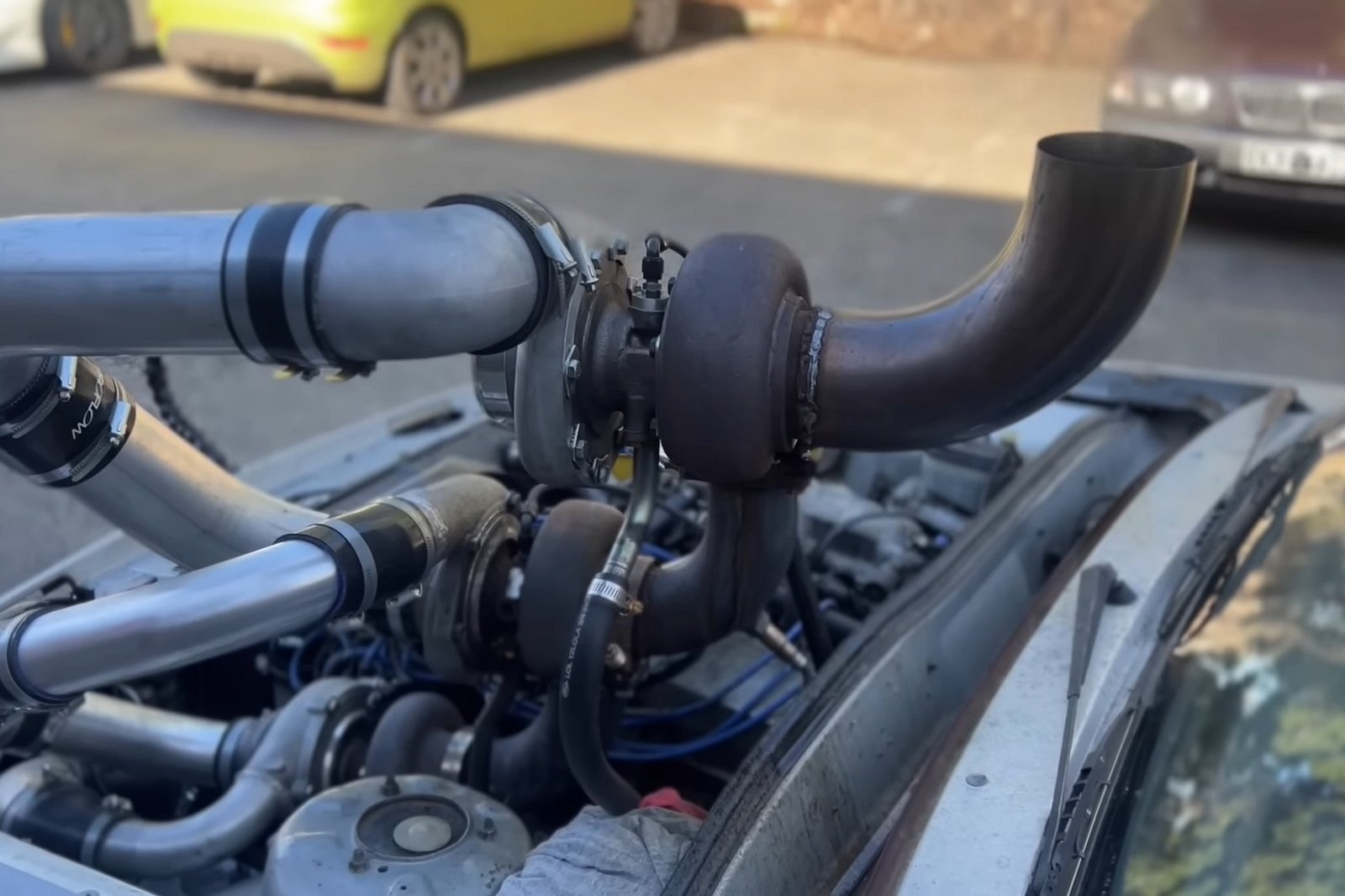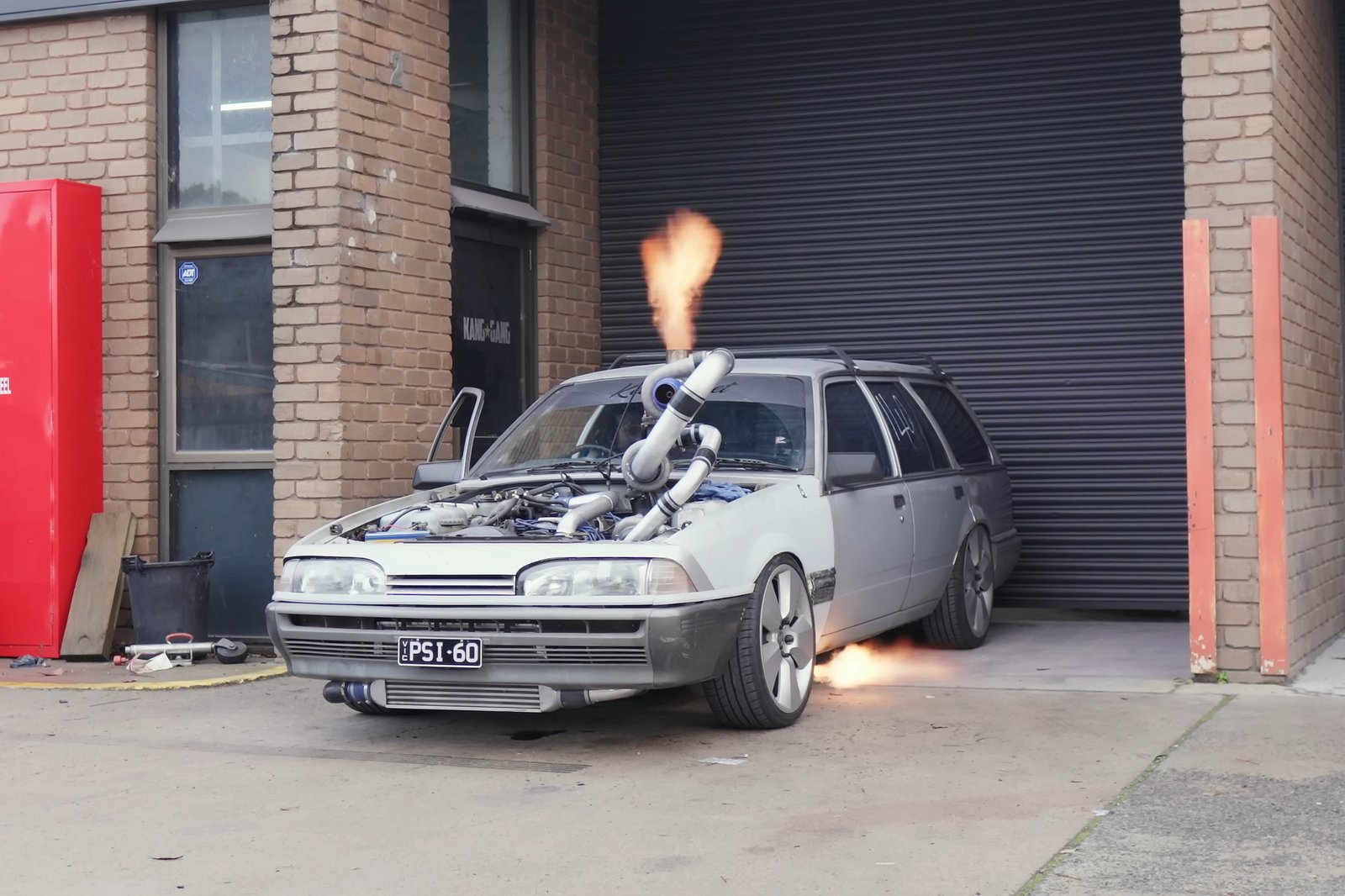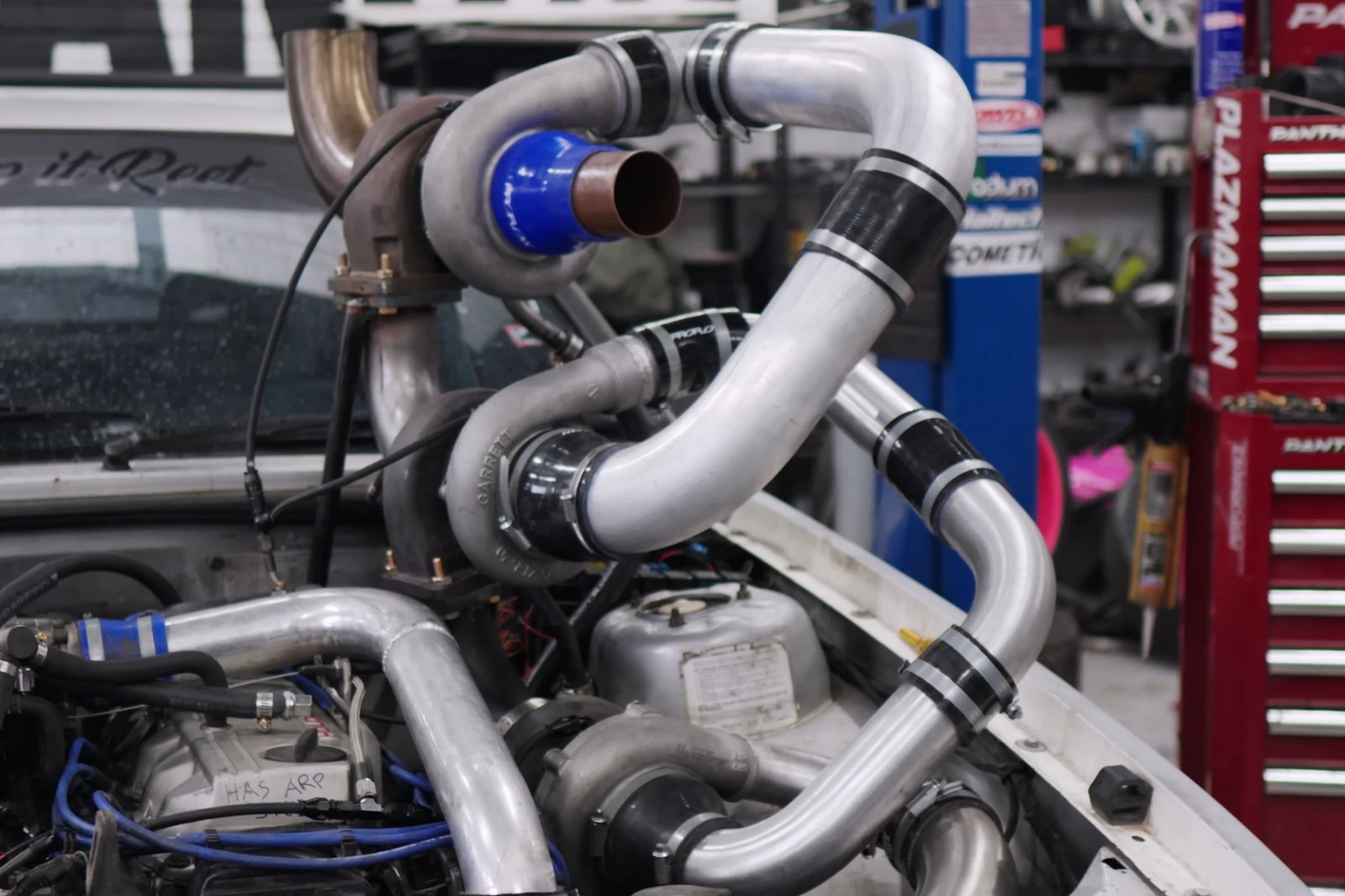Compound Turbos Are Great, So Why Is No One Doing It?

If you’re a car nut with YouTube then you’ve probably come across some of the content from the Keep It Reet boys - a bunch of hooligan drifters from Victoria that have developed an affinity for Holden’s 'king of compressor surge', the VL Turbo.
Their wagon project boasts an engineering marvel - initially a triple compound turbo setup that the boys have recently added a fourth turbo to - the build series of which has racked up over half a million views!

And while the skyscraper spooly boy set up is the most delicious form of clickbait we’ve ever laid eyes on, the principle behind compound turbocharging actually does have some engineering merit.
Unlike a conventional twin turbo system where two turbos of the same size spool and deliver compressed air to the engine independently of one another, compound turbocharging uses two different sized turbos - a smaller turbocharger, or ‘low-pressure’ turbo, kicks in at lower RPMs, spooling quickly to provide an instant surge of power. This compressed air is fed in to the intake of a second turbocharger (hence the ‘compound turbo’ name), compressed again and then fed in to the engine.

Compound turbo set ups are beloved for the remarkable increase in power and torque across the entire RPM range. Compared to conventional twin turbo set ups or a single large frame turbo, compound turbos can be sized and specified to give better throttle response and peak power - a compromise you have to make with conventional turbo set ups.
However, it’s not without its downside. There’s the packaging aspect of fitting two turbos in to your engine bay, along with all the plumbing needed to make it work. Plus, you’ll need two of everything - double the turbo oil and water lines, double the wastegates, blow off valves and silicone joiners, and we haven’t even spoken about the heat the set ups generate!

For this reason, compound turbocharging remains the domain of competition and event cars - most of those huge power diesel trucks you see throwing a leg out of bed on those Dyno Fail videos have wild compound turbo set ups, pumping Cummins engines with enough boost to put their cylinder heads in to orbit alongside Elon’s latest interplanetary foray.
While every car owner would love to push the boundaries and innovate, there’s a reason compound turbocharging isn’t as prolific as other forms of forced induction and power adders.
Comments
No posts found










